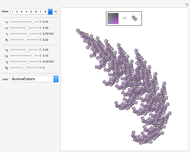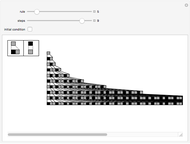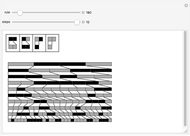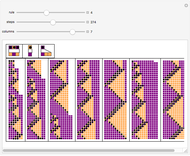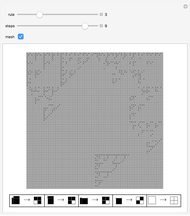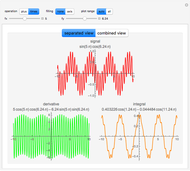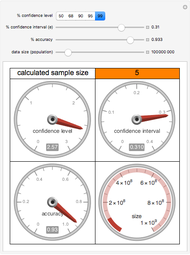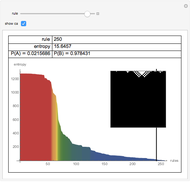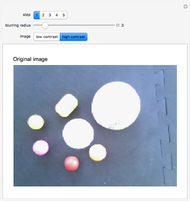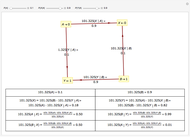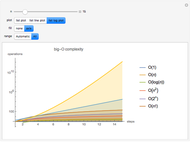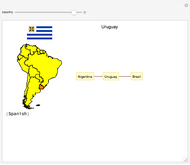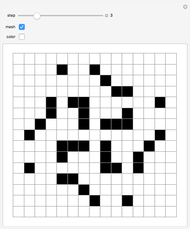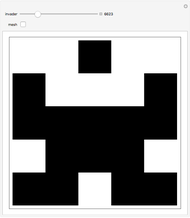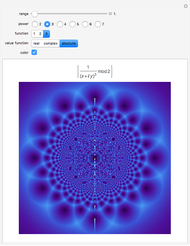Combining Blocks

Requires a Wolfram Notebook System
Interact on desktop, mobile and cloud with the free Wolfram Player or other Wolfram Language products.
Different centered symmetric patterns can be seen splitting each cell of a binary  matrix into four blocks, resulting in a
matrix into four blocks, resulting in a  matrix. There are
matrix. There are  different possible patterns (combinations). It is possible to apply the rules to a hexagonal image too.
different possible patterns (combinations). It is possible to apply the rules to a hexagonal image too.
Contributed by: Daniel de Souza Carvalho (January 2008)
Based on a program by: Ed Pegg Jr
Open content licensed under CC BY-NC-SA
Snapshots
Details
Each individual cell of nine blocks  is divided into four new blocks, with 16 possibilities:
is divided into four new blocks, with 16 possibilities:

Neighbors: those are the blocks side by side with the central cell  (N, E, S, W)
(N, E, S, W)
Corners: those are the blocks at each corner  (NW, NE, SW, SE)
(NW, NE, SW, SE)
Center: the cell in the middle 
The same data source (the matrix) and rules are used to plot the hexagonal view; the only difference is in how the data is presented.
Inspired by: J. Tarbell, "Breath of Complexity." (January 3, 2007).
Permanent Citation








